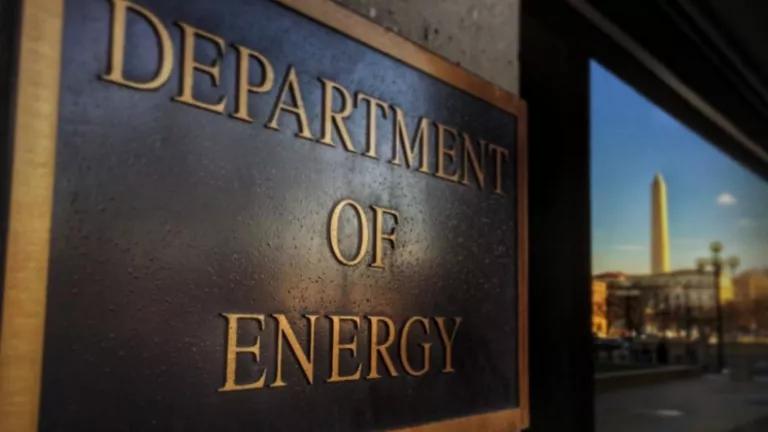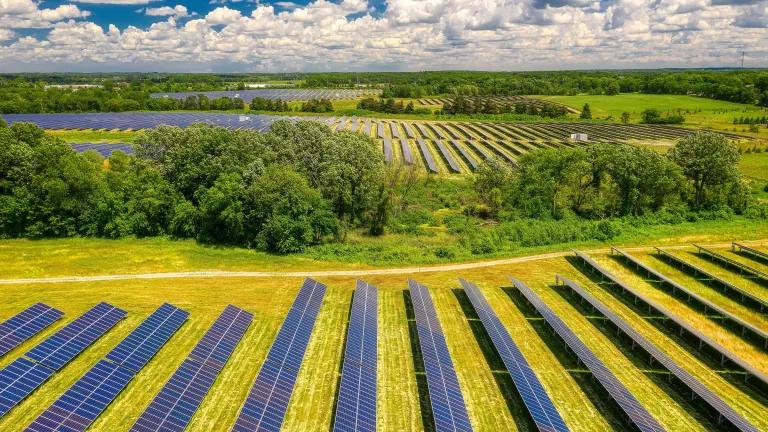House Climate Plan Calls for Clean Energy Homes & Buildings
A groundbreaking Congressional report sets a bold vision to zeroing out emissions.

A groundbreaking congressional report sets a bold vision to help put us on a path to zeroing out greenhouse gas emissions by mid-century. Transforming the nation’s buildings is a crucial component of this vision, given that they are responsible for around 40 percent of the nation’s carbon emissions. And getting to zero-carbon buildings will require a mix of smarter energy use through energy efficiency, obtaining that energy from a clean, renewable, zero-carbon energy source, and using it at the optimal time on a flexible energy grid to meet customer needs at the lowest costs.
The recent House Select Committee on the Climate Crisis report includes the correct key components for “decarbonizing” buildings, including better building codes, weatherization and retrofits of existing buildings, improved efficiency of low-income, public, and multifamily housing, reduced emissions from building materials, and building electrification.
Cutting Energy Use and Emissions in New and Existing Buildings
Energy efficiency is one of the cheapest and most important ways to reduce energy use and pollution in buildings. Energy use for heating, hot water, lighting and other equipment generates pollution both indoors from the burning of fossil fuels in appliances (such as in a gas furnace), and in the community from fossil power plants. While great progress has been made through better building codes and standards for appliances and equipment, all buildings will need to be made significantly more efficient to meet the goals of carbon reduction and ensuring all communities benefit from cutting energy waste.
The Select Committee staff report recommends a wide-ranging mix of tax credits, financial incentives, model standards for existing buildings, grant programs, and research and development initiatives to eliminate energy waste. We strongly support these types of initiatives–but to meet the challenge of upgrading virtually every building in the country over the next 30 years to meet the zero emissions goal, we need both voluntary incentives and standards.
Incentives encourage early adoption and develop the market for energy-saving technologies while standards take it the rest of the way, making this transformation affordable and equitable for all.
Switching to Clean Electricity for Heating and Hot Water
Heating and hot water are responsible for two-thirds of energy use in U.S. homes. In fact, U.S. buildings are responsible for 2 billion tons of carbon dioxide emissions annually, half of which are for heat-related applications like space heating, hot water, cooking and clothes drying. Modern electric technology, such as heat pumps and induction cooktops, are three to five times more efficient than conventional fossil-powered alternatives.
These super efficient appliances, powered by increasingly clean electricity, can slash climate and air pollution from energy use in buildings eventually down to zero. And they will save Americans money in the process, by cutting utility bills while cleaning up the air in our homes and commercial buildings.
Recent air pollution studies found that replacing gas appliances with efficient electric models in homes would prevent thousands of premature deaths each year and produce tens of billions in annual health benefits from cleaner air. These benefits are much higher in low-income communities already saddled with the health consequences of toxic air. These same neighborhoods tend to grapple with smaller, overcrowded spaces, poor ventilation, and older or poorly maintained appliances, making burning gas indoors even more hazardous.
While the Select Committee sets a bold direction for the nation, states and cities can and need to lead, by implementing policies that jumpstart the transition, such as local building energy codes accelerating all-electric new construction, and utility investments in programs that develop the market for new energy-saving building technologies, bringing their cost down like solar and batteries so that they are accessible to all. Federal, state, and local governments have key roles to play, and complementary authorities and funding capabilities, to accelerate the transition to cleaner, healthier, and more affordable buildings.
Reduce Emissions from Building Materials
The types of materials used to construct a building determine its “embodied carbon.” For example, it takes a lot more energy to produce concrete and steel than it does to sustainably grow a tree for wood, so buildings made from concrete and steel have a much higher level of associated carbon emissions even before they get to the construction site. The Select Committee highlights important foundational components to reducing the carbon associated with manufacturing and transporting materials, like establishing a national database of building materials and creating certification and labeling schemes for green materials.
Other important steps include leading by example with requirements for federal buildings, and incentivizing adaptive reuse of existing buildings rather than constructing new from the ground up. Again, these are all concepts we support--but relying solely on voluntary action won’t be sufficient to meet our ambitious, but necessary, clean air and climate goals.
Invest in Vulnerable Communities
Lower-income households and communities that historically have not been the focus of investments bear the brunt of the climate crisis. The Select Committee recognized the importance of serving these communities much more robustly going forward, through a mix of enhanced weatherization to improve energy efficiency, comfort, and durability of homes; expanded access to solar energy generation; increased grant funding to local governments for energy efficiency programs; and enhancements to community development financial institutions. The report also calls for significant investment in the energy efficiency of affordable housing, public housing, schools, hospitals, and public buildings, along with new efficiency standards for manufactured and federally assisted housing and enhanced policies to support sustainable communities.
This may seem like a laundry list of policies, but each is crucially important. The need to scale up investment in under-resourced communities is multi-fold. On an individual level, investments will improve living situations and increase utility and housing affordability. On a more universal level, it is impossible to achieve the essential climate goals outlined in the report without addressing and working to reverse the harm suffered by disadvantaged communities. And due to past underinvestment, proportionately more financing is needed. The opportunity to partner with other efforts like health or housing programs could help ensure that we capture comprehensive benefits, while spreading the cost across multiple sources. Local governments are well-positioned to do this, which the Select Committee recognizes.
Provide Federal Leadership on Buildings
The federal government is the country’s largest building owner. Leading by example can serve as a powerful way to demonstrate and deploy new efficiency technologies, while proving that it is possible and economic to achieve building-related goals. Federal buildings should be held to a binding high standard of efficiency and carbon reduction.
Investment in our nation’s buildings relates strongly to the other pillars outlined in the report, including protecting and enhancing our workforce, environmental justice, health, and resilience. This is the most detailed and robust plan we’ve seen from Congress to tackle climate change, and it should be launched at once. However, this plan is not the sole thing we need to fight the climate crisis and improve our building stock: cities, states, and local governments must also act, particularly since they are often able to move more nimbly than the federal government. But federal leadership is crucial to meeting our climate and equity goals.



